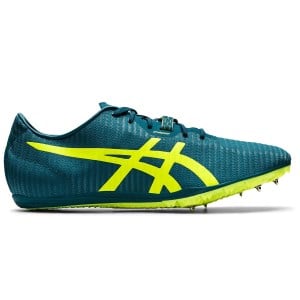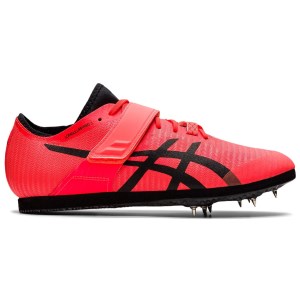What Shoes Should I Wear For Track & Field?
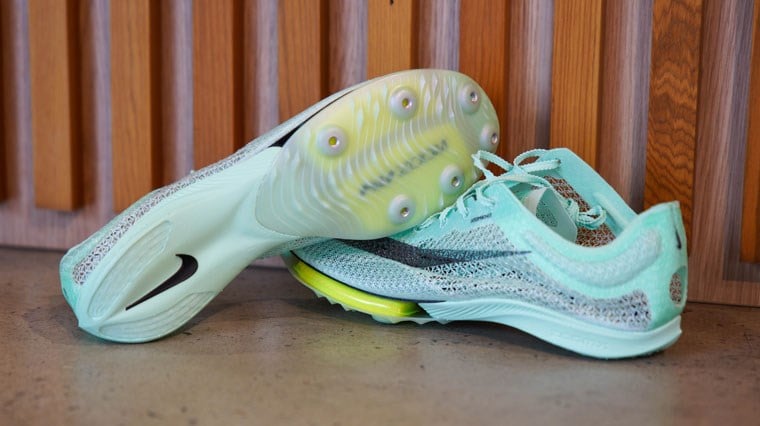
Whether you’re a beginner track athlete or are competing at an elite level and are looking to refresh your track and field gear, it’s critical to understand the fundamentals of your footwear in terms of fit and function.
In this track and field shoes guide Sportitude Running discusses everything you need to know about how to choose athletics shoes to excel at your discipline and perform at your peak.
To help you choose the right shoe for the right event, we'll do a breakdown of track running spikes, throwing shoes, jumping spikes and racing waffles, and identify the why behind the engineering components in terms of their traction, support and cushioning characteristics (or lack of!).
Down the track we’ll also dive into Little Athletics and identify the kids' athletics shoes required to get your budding athlete into track and field events the right way to keep them comfortable and their growing bodies protected from injury.
What Are Track & Field Spikes?
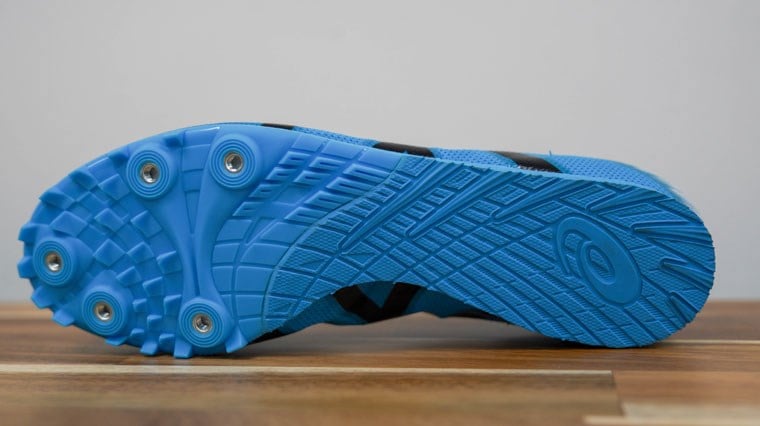
Track and field spikes (often just referred to as ‘spikes’) are specialised footwear for competing in track and field events.
The base of a track spike features pointed metal pins screwed into a spike plate. These metal pins (also called ‘spikes’ or 'spike pins') protrude from the base of the shoe to provide high levels of traction, a defining feature that sets track and field spikes apart from other sports shoes.
Metal pins on the base of running track spikes allow them to bite effectively into synthetic rubber track surfaces at high speeds, even in wet conditions. The metal pins on running track spikes are usually 6mm in length and their unique engineering aids in providing both propulsion and traction.
The quantity and placement of metal pins mounted beneath a running spike will vary according to the specific race distance they were designed for – with more metal pins on running spikes designed for shorter races, and fewer metal pins on running spikes designed for longer races. We’ll discuss the reasons for this in further detail below. The image above shows an outsole of a long distance track running spike that accommodates 5 metal pins beneath the forefoot.
Running isn’t the only event where traction is essential, with jumping spikes and javelin shoes also featuring metal pins to aid in speed during the run-up phase. The metal spikes beneath jumping and javelin shoes allow you to solidly plant your feet to optimise the transfer of power – whether you’re throwing a javelin to maximise horizontal distance, or high jumping to maximise vertical height.
Similarly to a standard screw, the metal pins of track and field spikes feature threads that allow them to be twisted or untwisted from the base of the track spike with the use of a spike wrench. This allows them to be replaced to keep traction at an optimal level, and for you to customise your athletics shoe with pins that suit your specific event, the conditions and your personal preference.
Although a wide variety of track and field shoes feature a spike plate, the weight, support and cushioning characteristics of track and field shoes differs dramatically depending on their specific function. In our athletics shoes guide below we’ll share the ins and outs of each type of track and field shoe to help you shop confidently when you next make a shoe purchase.
Track Running Spikes
Sprint Track Spikes
Event distance: 100m – 400m
Number of spike pins: 7 – 10 pins (typically 8)
Sprint spikes are designed for high-intensity racing in short and rapid bursts on the track. Engineered for speed first and foremost, they’re the lightest weight category of racing shoe.
Sprint spikes are designed for biomechanically efficient runners who typically hit the ground first on their forefoot (forefoot striking). The metal pins are strategically placed underneath the forefoot to aid in propulsion as you push-off from the balls of your feet or toes while providing aggressive, high-speed traction. This creates a powerful and reactive feel on race day - the Asics Hyper Sprint 7 track spikes are a great example.
Sprint spikes are rigid at the forefoot with a stiff plate to encourage powerful forefoot running and feature an exaggerated toe spring (upward curve at the toe) to complement your energy-efficient running gait. These engineering components translate to explosive forward momentum and a short ground contact time.
With speed the priority, sprint spikes do not cater to heel strikers as this running gait increases the braking forces acting on your body. Sprint spikes have no support at the heel and rearfoot cushioning is absent. Cushioning is also extremely minimal throughout the remaining length of the sprint spike to minimise weight.
Featuring the highest number of metal pins compared to other track running shoes, sprint spikes provide stability, balance and bite to set an elite pace. This enables you to feel more controlled and stable on the forefoot with lower risk of wobbling or compromising your running efficiency.
Sprint spikes that are engineered for running in a straight line on a linear section of track will have a higher degree of rigidity compared to track running shoes that require an additional element of flexibility to turn smoothly.
Fit advice: Sprint spikes are designed to fit like a glove and you should expect a snug, precise and foot-conforming feel. This narrow fit allows them to move like an extension of your body – allowing your footwear to accelerate your speed rather than hinder it. They should be tight-fitting to optimise power without your toes feeling crushed or pinched within your sprint spikes.
Middle Distance Track Running Spikes
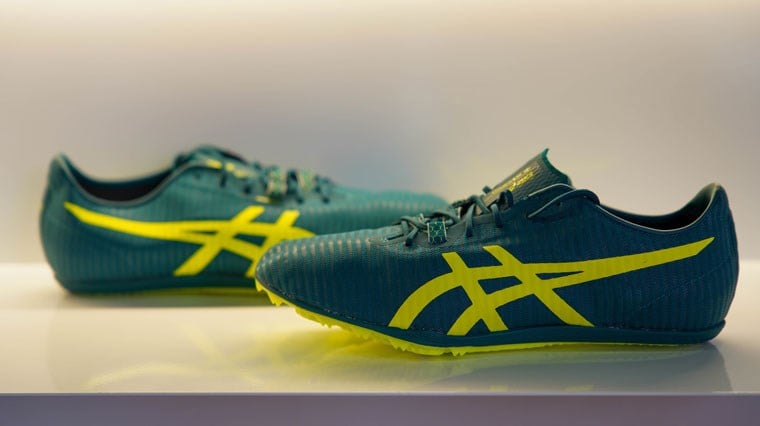
Event distance: 400m - 1500m
Number of spike pins: 5 – 8 pins
With lightweight designs that offer an element of cushioning, middle distance spikes are the more versatile option of the track running world as a hybrid between sprint spikes and long distance track spikes.
If you’re an entry-level track athlete dipping your toes into athletics and are undecided on your event, or you’re a multi-event athlete that isn’t prepared to commit to purchasing several track shoes for your shoe rotation, middle distance spikes are the preferred choice.
They cater to a wider variety of runners, with a degree of heel cushioning, support and flexibility to prevent soreness and fatigue during middle distance events. This also makes them an option for midfoot to heel strikers that are enthusiastic to compete.
Middle distance spikes have a less prominent spike plate compared to sprint spikes while still remaining relatively aggressive in terms of traction. They remain rigid in the right places to encourage you up on your toes when it’s time to shift the pace up a gear, while offering optimal cushioning that longer stretches of track demand. This blend of characteristics make middle distance spikes the go-to for hurdle events – encouraging speed as needed and softer landings.
Middle distance track spikes are commonly used for long jump, triple jump and pole vaulting events and share many similarities with these styles of athletics shoes. They are often worn by junior jump athletes or competitors that prefer slightly less rigidity through the forefoot compared to shoes that are specific to jumping events.
Fit advice: Middle distance track spikes offer a secure hold at the midfoot to keep you locked-in on the platform. They provide a generous fit at the forefoot compared to sprint spikes to accommodate the natural swelling of your toes during middle distance events, while still delivering a snugger fit than road running shoes.
Long Distance Track Running Spikes
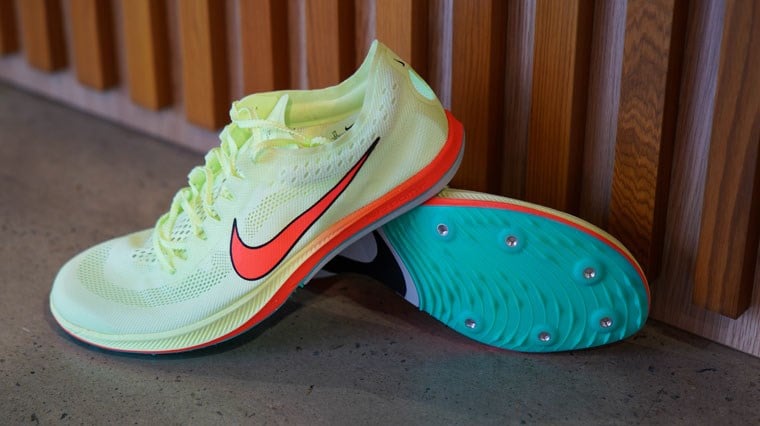
Event distance: 1500m+
Number of spike pins: 4 – 6 pins
Long distance track running spikes offer the next step up of flexibility and cushioning to rule the track in a lightweight package. Engineered to conquer more distance, they’re typically more durable and nimble than sprint and middle distance track spikes.
Considering long distance spikes are designed for events from 1500m – 10K, it’s unlikely you’ll be forefoot striking the entire event. Forefoot striking repetitively for 5K and up can make you more prone to common running injuries and muscle pain of the calves.
To offer more midfoot and heel-striker friendly engineering, the plate and toe spring in long distance spikes is less aggressive, so often the shoe looks ‘flatter’ depending on the specific brand or model.
Cushioning is increased from midfoot to rearfoot with race-ready foam for protection. That certainly doesn’t mean speed isn’t a factor, with Nike throwing in shoes like the Nike ZoomX Dragonfly long distance track spikes into the race line-up. It's designed to turn your legs over efficiently while keeping your feet feeling energised and fresh with ZoomX foam for protection.
More flexible soles allow you to engage your foot from heel-to-toe more naturally compared to sprint spikes that are designed with a tunnel vision on speed. Long distance track spikes often trade in the rigid, plastic plate of sprint spikes in preference for a springy PEBAX material like the Asics Cosmoracer LD 2 or carbon-fibre plates like the Nike Air Zoom Victory for a snap that complements longer distances.
As we already touched on, the longer the distance, the fewer metal pins are required on the spike plate – fractionally shedding weight where it’s not needed, whereas more pins are essential for sprint spikes that rely on runners to maintain control at higher speeds, particularly when forefoot striking.
Long distance spikes wrap your feet in a lightweight, breathable and durable mesh upper to allow heat and humidity to escape – providing ventilation to aid in cooling so you won’t feel weighed down when conquering longer lengths of track. Some long distance spikes like the Nike Zoom Mamba V are designed with steeplechase in mind with improved water drainage.
Fit advice: Although fit essentially comes down to personal preference, long distance running spikes generally offer a more relaxed fit compared to sprint spikes for comfort over longer distances. Alike with middle distance track spikes, a more spacious forefoot allows your toes to swell naturally without compromise to the secure, race-ready fit.
Cross country Spikes
Event distance: 4 – 12km
Number of spike pins: 4 – 5 pins
Cross country (XC) racing takes your performance off-road. Here you’ll encounter uneven terrain and challenging conditions, from bone-dry dirt, dewy grass to deep and slushy mud. Cross country racing builds grit – and you need spikes that are adaptable to meet changing, natural environments.
Your feet have to withstand rough treatment and unlike on the road or track, you can’t count on the terrain being consistent. In the athletics category, cross country spikes offer the thickest stack of foam from forefoot to heel for shock-absorption in a variety of conditions and terrain types. They also tend to be more supportive to keep you solid on the platform in wild environments.
Foot-hugging uppers provide a blend of breathability, off-road support and protection with anti-debris mesh similar to trail running shoes to keep sharp twigs and stones from hitch-hiking a ride inside your cross country spikes.
A durable rubber outsole helps resist punctures from natural debris underfoot. The trade-off for improved protection is a higher weight, remaining lightweight but not to the extent of long distance spikes.
In cross country events the challenge comes from not only racing against yourself or your competitors, but in conquering the terrain. Cross country spikes may have pyramid-shaped pins ranging from 6mm for dry environments to 9mm long pins to handle most conditions off-road when the weather takes a turn. These metal pins can be as long as 12mm – 15mm when aggressive bite is needed in deep, unforgiving mud.
Comparatively, a default length of 6mm metal pins is used in most track and field shoes as pins longer than this often aren’t allowed in track events as they can damage particular track surfaces.
Fit advice: Compared to everyday running shoes, cross country shoes offer a snugger, foot-conforming fit to allow foot and shoe to move in harmony at a snappier pace, during sharp turns and over technical terrain that challenges your stability and proprioception. The distance between your longest toe and the end of your cross country spikes should be about ¼ inch (6mm) compared to ½ - 1 inch or a toe’s width to the end of your road running shoes.
Athletics Throwing Spikes
Shot Put, Discus & Hammer Throwing Shoes
Shot put, discus and hammer throw fall under the category of ‘rotational’ events. Throwing shoes targeted for any of these events can typically be used for all three disciplines - even though shot put is technically classed as a 'putting' rather than a 'throwing' event. Throwing shoes have a spikeless design to cater to the specific movement these events involve – spinning or gliding to unleash high levels of power into the throwing action.
Rather than a focus on consistent, linear momentum like racing shoes, throwers gain momentum through a pivoting or lunging movement. For shot put throwers with a spin technique (rotational throw similar to discus), this is achieved through a smooth, flat base like the Asics Throw Pro 2 throwing shoes.
Alternatively, throwers with a glide technique (traditional lunging motion) benefit from a rubber outsole that’s textured for reliable grip. For the glide technique, traction amplifies your control, benefiting you both in directing your power precisely and in reducing your risk of injury.
With stress targeted at this key point of the throwing shoe, it’s unsurprising throwing shoes are designed to be durable to withstand a beating from repetitive use on the field. Throwing shoes used for discus in particular have more weight to them compared to field shoes for other events, offering stability, non-slip grip and keeping the athlete grounded with foot planted as needed during the throwing phase. Throwing shoes often feature a strap to lock-in your foot during these explosive movements.
Javelin Spikes
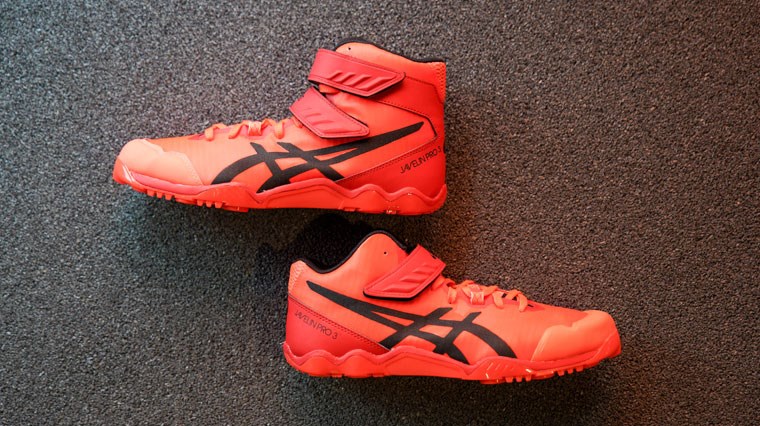
Javelin is a non-rotational event, with javelin spikes more closely resembling jumping spikes compared to throwing shoes. Javelin spikes have many similarities with high jumping shoes due to the side stepping or side on motion in the crossover or run-up phase during these events.
Javelin spikes are the heaviest spikes across all events, with this additional weight helping protect the blocking foot to reduce risk of injury as it must tolerate high loads of stress. Javelin spikes often feature high top profiles to provide ankle support during the braking stage when the javelin is released with an explosive throw.
Models like the Asics Javelin Pro 3 javelin spikes feature lockdown straps to keep your feet stable on the platform and an asymmetrical design to cater to a specific throwing arm, in this case right-handed throwing. The high cut profile on the left shoe and twin straps provides support to the ankle, while a lower profile and single strap on the right shoe allows you to throw with greater flexibility.
The forefoot and rearfoot of javelin spikes both feature metal pins for grip during the approach and to create a stable base when planting the foot. In javelin, it’s permissible for the heel to feature longer spikes compared to the forefoot.
Fit advice: Your throwing shoes should be tight-fitting, creating a stable base and helping you stay connected to the ground without risk of your foot slipping inside the shoe during powerful movements.
Athletics Jump Spikes
Jumping events vary greatly – not only when we’re looking at horizontal versus vertical jumps, but when considering how this affects the level of force that acts on your body when landing.
In simplifying the events for beginners, the long jump and triple jump events focus on horizontal jumps – with a goal to achieve the longest jump distance in terms of length. Alternatively, high jump and long jump are vertical jumps and are all about achieving height.
Horizontal Jump Events: Long Jump & Triple Jump
Long jump spikes closely resemble middle distance spikes, with slightly more rigidity through the forefoot for explosive acceleration during the run-up phase and featuring a heel to provide leverage and support during the take-off and penultimate step (second last step). Visually they’re fractionally bulkier than their running spike cousins and tend to offer a higher degree of ankle support.
Triple jump spikes have similar characteristics to long distance spikes with a stiff forefoot and prominent, protected heel to support heavier landings. During the triple jump, the entire sole of the athlete’s feet is required so they typically feature full-length cushioning and support. To prevent your feet from shifting inside the jump spike during each phase of the jump, they offer a secure lockdown with a strap wrapping across the top like the Asics Long Jump Pro 3.
Vertical Jump Events: Pole Vault & High Jump
For vertical jump events, the horizontal force during the run-phase is converted to vertical force to gain height – meaning your jump spikes must be engineered to support this transfer of power with minimal energy loss.
Many elite pole vaulters wear a long jump or triple jump spike when competing based on personal preference, but Nike also manufactures pole vault spikes specific to the sport. As with triple jump spikes, they provide full-length support and are engineered to elevate stability when planting the pole and getting in an optimal position to take-off.
High jump spikes like the Asics High Jump Pro 2 feature two versions of the same model – offering left or right foot take-off with an asymmetrical outsole. It’s another way of personalising the fit and function to the individual athlete. High jump spikes go the extra mile to keep your foot steady and centred on the platform, in this case with DYNAWRAP technology and hook-and-loop belt closure.
High jump spikes feature 4 pins in the heel to provide high levels of traction when landing heel first to take-off. This also makes them capable of competing during track meets when the weather or track conditions aren’t ideal.
Fit advice: Jumping shoes should create a solid hold around your heel for the run-up phase and jumping, while delivering a secure fit to complement their traction characteristics without compromising your stride pattern or acceleration. With a strap closure they often provide an element of adjustability to optimise the fit to your feet.
Little Athletics: What Track & Field Shoes Are Best For Kids?
Kids' track spikes are difficult to find and for good reason – they aren't allowed for children under the age of 10 (age groups from Under 6s to Under 10s) in any event. This isn’t because Little Athletics want to leave the fun just for us grown-ups, but to address safety issues in terms of the biological differences between growing children and adults.
Reading this track and field shoes guide, you probably have an idea of the philosophy behind track spikes – often offering minimal support and cushioning with speed the priority. This is A-OK for biomechanically efficient runners, but for developing feet the lack of cushioning in high-impact zones, little to no support of the heel and the rigid engineering underfoot can lead to an overstressed Achilles tendon and beat up feet overall.
The pins in track spikes themselves are sharp and can be dangerous if children aren’t very cautious with how their track spikes are stored and carried.
It's important to note that for Little Athletics:
- Track spikes are not allowed in the Under 10s age group and younger age groups.
- Track spikes are allowed for Under 11s and Under 12s in track races only if they're run in lanes throughout the whole event (100m - 400m) as well as in the field events javelin, long jump, triple jump and high jump.
- For long distance races, only Under 13s and older age groups are allowed to wear track spikes.
- Do check the rules of your local Little Athletics Centre to ensure your child's footwear is permissible.
It’s healthy for your little athlete(s) to try a variety of track and field events to use their body in different ways, keep their mind stimulated and to motivate your kids to exercise. For kids just starting out in athletics, many of these tips on how to get your kids into running can also be applied to support and encourage an active lifestyle from a young age.
There’s no need to settle on a favourite track and field event so having an athletics shoe that is versatile is an advantage in terms of affordability. For little athletes this could mean gearing up in a pair of kids' racing waffles. We'll discuss the benefits of racing waffles below in terms of their versatility, adaptability and comfort for both growing feet and adult feet.
For older kids and teenagers, the Asics Hyper MD middle distance track spikes or Nike Zoom Rival M 9 can handle it all – from 100m – 800m racing events, long jump, high jump, javelin and hurdles. The forefoot engineering is less aggressive and less rigid compared to their competitors, making them suitable and more forgiving on the feet of growing track and field enthusiasts. Considering that Little Athletics meets may include five different events, it’s beneficial that your child has a shoe that they can trust to do it all without overcomplicating their footwear choices.
It’s only when kids are becoming more specialised in their sport and are competing at state championship or national level, that a specific track and field shoe for each discipline may be worth your consideration. It’s interesting to note that athletes participating in track and field events generally don’t peak until their mid to late 20s – so your child has plenty of time to pursue a specific event if they choose to compete professionally.
What Are Racing Waffles?
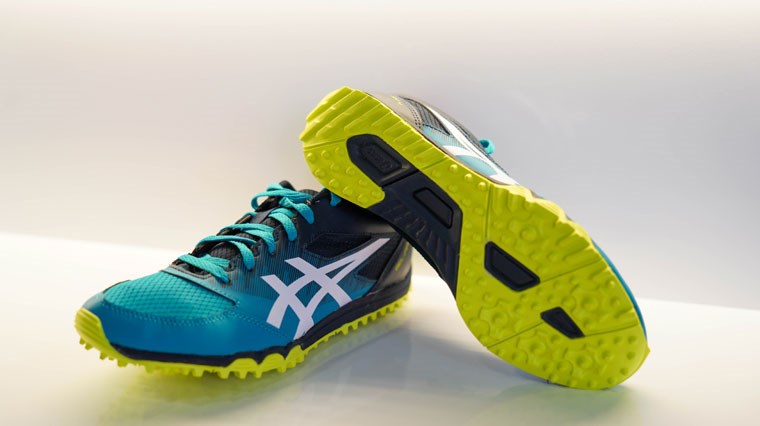
Kids as young as 5 years of age participate in Little Athletics. Due to the age restrictions on track spikes that we've already touched on, racing waffles become the highlight of the conversation when we're discussing athletic shoes for age groups between 5 – 10 years old – and by no means are waffle shoes limited to kids.
Racing waffles are spikeless track shoes with a grooved and grippy waffle-like traction pattern, with a unique origin story that you can read about in Nike’s 50th Anniversary: A Celebration Of Sport & Future Sustainability with the birth of the Nike Waffle Trainer.
Young and new track athletes of all ages find that waffles are easier to acclimatise to compared to track spikes which can be jarring or even painful at first. Being spikeless, racing waffles are capable of being very lightweight and easily adapt to changing terrain – making them a favourite choice for cross country running, especially if the course also includes roads or rocky surfaces that aren’t suitable for spikes.
Racing waffles tend to be versatile for everything from short to long distance track running and jumping events. The Asics Gel Firestorm kids' racing waffles are a popular style for little athlete's with Gel cushioning for protection. Once your young champion is aged 10 or up, they can gradually graduate from racing waffles and transition to spikes if this is suitable choice for them personally.
For adults that prefer the comfort and adaptability of racing waffles, the Asics Hyper XCS 2 is a potential match for track and cross country events.
How To Take Care Of Your Track Spikes (And Your Feet)
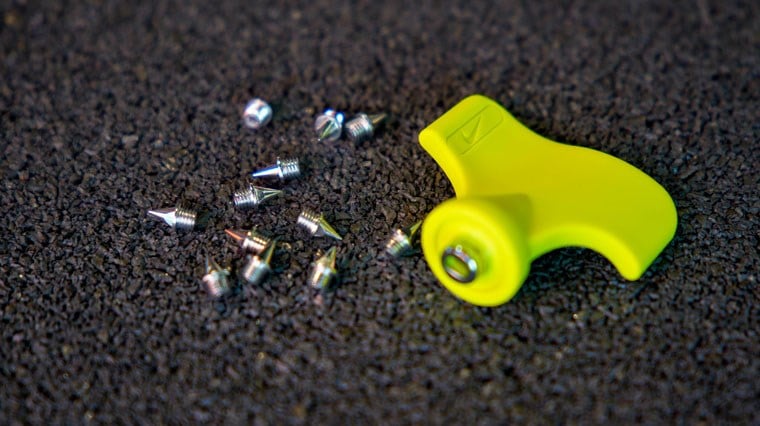
Now you have a more solid idea of the best athletics shoes for you and your little athlete, a little bit of know-how can go a long way to keeping your track spikes or racing waffles in peak condition for longer.
- Athletics track surfaces are usually made of synthetic and spongy rubberised material – allowing your spikes to bite into them easily. Never wear spikes on hard surfaces like road, pavement or footpaths. This is not only damaging to the metal spike pins, but will be painful for your feet.
- Remove your racing waffles or track spikes following your event to prevent them wearing down early – ensuring they are only worn for their intended purpose. This will also give your feet an opportunity to stretch, relax and breathe after being in snug-fitting athletics shoes. You may consider throwing on a pair of recovery shoes to take care of your feet after training or competition.
- Many runners reserve track running spikes for competition only and stick to fast road racing shoes like the Saucony Endorphin Speed 3 for training, extending the lifespan of their spikes while giving their beat up feet a break with higher levels of cushioning. Nevertheless, track spikes do have a place in the shoe rotation of runners at both an entry-level and elite level, helping your lower body adapt to an increased stress load and allowing you to train for increased power.
- Metal spike pins can rust when exposed to moisture. Remove dirt and grass from your track spikes as soon as possible to prevent staining, rusting and to keep them looking like-new for longer.
- Don’t put your track spikes in the washing machine or dryer – this can cause significant damage and cause the adhesive materials bonding the soles to lose integrity. Instead, check out these tips on How To Clean Your Dirty, Smelly Running Shoes by one of Sportitude Running's shoe experts, Josh Willoughby.
- Even if there’s no need to change your spikes for a different shape or length, we recommend loosening them every couple of weeks with a spike wrench to prevent them from becoming stuck or rusting in place. When screwing in the metal pins, do so carefully to ensure they are aligned in the shoes correctly. Using force can damage your spikes – rotate the pins in place gently.
- Metal pins won’t last forever – replace them when they wear out or become damaged. They’re no good to you if they’ve been worn down to stubs – causing them to loose their traction and compromising your performance
- Athletes that are susceptible to common running injuries such as plantar fasciitis, Achilles tendonitis and calf injuries may be better suited to waffle racing shoes over track spikes.
- To keep your track spikes, racing waffles and feet in peak condition, we recommend wearing thin technical running socks inside your athletic shoes such as Steigen running socks. With a barely there feel, they won't compromise the snug fit, but they will provide sweat-wicking technology to keep both your feet and shoes fresh and to ward off blisters.
Important Information
For higher level athletes competing at a state or national level, please view Shoes Approved by World Athletics to ensure you're purchasing an approved model for your event.
At Sportitude Running we are proud and passionate to support your journey as a track and field athlete.
For an in-depth shoe fitting experience, you can book a free 15 minute video chat in a Live Fit session with our shoe experts or come on down to our running speciality store Sportitude Running@Hindmarsh for expert advice in your shoe purchases.
If you have any questions or theories about track and field shoes - we'd love to hear them! Contact us and we'll get back to you as soon as possible.
Happy track running!

